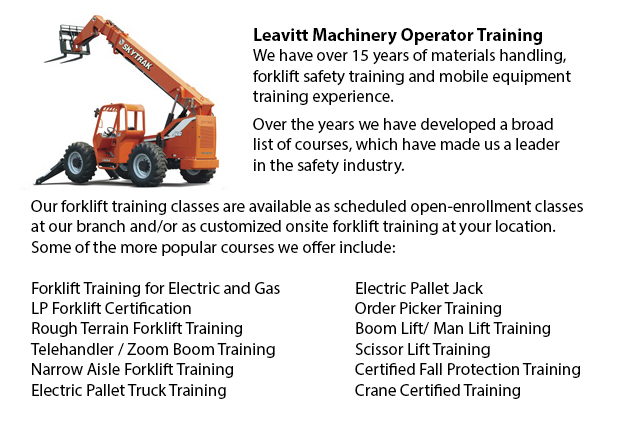
Hamilton Telescopic Training - Telescopic Handlers are a kind of forklift, often known as telehandlers. This machine has been increasing in popularity due to its greater lift heights and its versatility. It is normally preferred over the traditional masted counterbalance truck (standard and rough terrain). Whether utilized for transporting raw materials into the back of a dump truck or for transporting pallets within a warehouse, the telescopic forklift is a valuable machinery. Accredited telescopic handler training is important to ensure the efficient and safe utilization of the unit.
A telescopic forklift is designed to lift heavy stuff using an arm, that extends in parts similar to a telescope. To select a telescopic forklift, you need to take into account how the machinery would be utilized and for how long. Lift heights required and work site terrain need to be considered. Price, warranty, and parts are all factors involved in buying a telescopic forklift. If you are leasing, you should compare terms, delivery costs and prices.
This type of lift truck comes in numerous sizes, which directly reflects the amount of weight it can load and the heights it can safely lift products to. If the task is to transport materials into the back of a pick-up then a small to medium sized telescopic forklift is perfect. Lifting heavier materials up higher would require a larger lift. Careful consideration of how the lift would be used helps ensures you will choose the right size for safety and stability.
When choosing this type of equipment, attachments likewise need to be considered. Find out from the manufacturer what attachments are offered. There are bucket attachments, pallet attachments and other attachments used for particular reasons.
The variety of tires for the telehandler will depend on the flooring and terrain of the worksite. Smaller units will usually have cushion tires made with rubber all the way through. Cushion tires are best for telehandlers being utilized within a warehouse with a concrete floor. They give durability and stability. Pneumatic tires are often on larger units utilized on various, outdoor terrain where there could be dirt, rock, asphalt and concrete. They offer the best traction and articulation.
-
Hamilton Aerial Platform Training
Hamilton Aerial Platform Training - Aerial hoists are able to accommodate various odd jobs involving high and hard reaching spaces. Often utilized to perform routine repair in structures with high ceilings, prune tree branches, hoist heavy shelving u... More -
Hamilton Heavy Equipment Operator Certification
Hamilton Heavy Equipment Operator Certification - The heavy equipment operator is a person who manipulates the controls and drives different kinds of big machinery. Heavy machinery is most commonly utilized on construction sites to deliver supplies t... More -
Hamilton Scissor Lift Ticket
Hamilton Scissor Lift Ticket - Scissor lifts have greatly benefited construction operations in view of the fact that the job that used to require much effort and lots of people, can now be completed utilizing the scissor lift truck and only one indiv... More -
Hamilton Forklift Certification Courses
Hamilton Forklift Certification Courses - Forklift certification courses really help to make sure that businesses utilizing forklifts, comply with the regional and local rules. The drivers of the forklift should undergo forklift certification prior t... More -
Hamilton Forklift Training Program
Hamilton Forklift Training Program - The forklift is a common powered industrial vehicle which is in wide use these days. They are occasionally called jitneys, hi los or lift trucks. A departments store would use the forklift to unload and load merch... More -
Hamilton Forklift License
Hamilton Forklift License - Obtaining a forklift license or forklift certification in North America would require the trainee to do hands-on training in addition to classroom instruction. The state, provincial and federal regulatory bodies are respon... More -
Hamilton Manlift Operator Certification
Hamilton Manlift Operator Certification - Our aerial lift and scissor platform training and certification empowers participants with a general understanding and knowledge of the efficient and safe use of "Power Operated Mobile Work Platforms," under... More -
Hamilton Forklift Operator Certification
Hamilton Forklift Operator Certification - Forklift operator certification is usually needed for employees working in industrial, warehouse or construction setting to guarantee the safe utilization of forklifts. Workplace training has to follow a met... More

Forklift Certification Hamilton
TOLL FREE: 1-888-254-6157
Hamilton, Ontario
forkliftcertificationhamilton.com
Email Us
About Us


